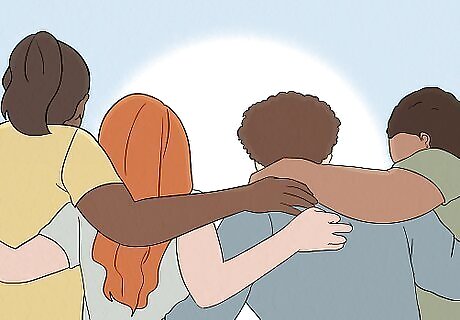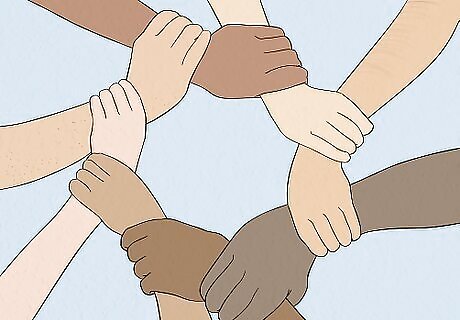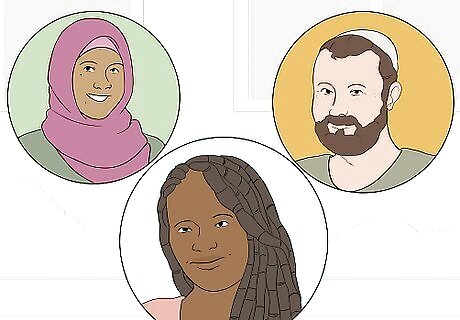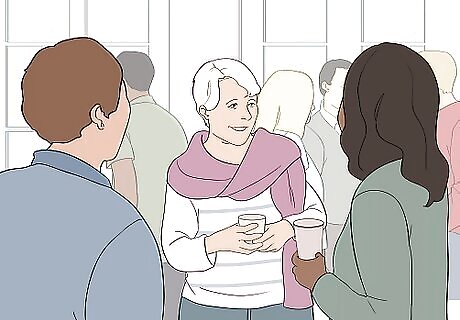
views
- Engaging communities in preparedness efforts can increase trust in national authorities and provide tools and skills so members can help in times of crisis.
- Community members might feel more confident to handle future challenges, communicate with each other, and give feedback about disaster plans.
- Communities may also be better able to tailor their plans to the unique needs of their members and take into account their beliefs, traditions, and norms.
Why is it important to engage communities in preparedness efforts?

Allows communities to use local knowledge to help others. People in a community may know more about the local terrain, weather patterns, or the areas that are more likely to get hit the hardest during certain disasters than federal or state authorities do. Members can also help identify safe places to evacuate and what methods of communication would be most effective during a time of crisis. Involving community members might also foster innovation because locals can use their own knowledge to form creative solutions that meet their community’s specific needs. For example, a community member might know if a neighborhood or street is more likely to need assistance during a flood because it’s at the bottom of a hill.

Fosters a sense of empowerment among community members. When you train a community to respond during a crisis, they become more active in participating, implementing, updating, and practicing disaster preparation plans. Empowering a community and allowing them to take ownership of their disaster plans can also foster a sense of solidarity and collective responsibility. Because members feel like they have the power to make a change, the entire community feels responsible for helping each other during a time of crisis.

May improve a community's disaster response times. In any disaster, community members are often the first to provide aid, carry out rescue missions, and make sure that everyone receives care immediately. Engaging a community in planning their disaster response can reduce the number of lives lost and make sure that help is available quickly. In addition, preparedness efforts train community members in first aid, search and rescue operations, and basic disaster management, which can speed up the response process.

Helps communities feel more capable of handling future challenges. With training to deal with disasters, community members might feel more in control in times of crisis, which can reduce the negative effects of disasters, foster a sense of resilience, and reduce fear and anxiety. This can also help create a sense of hope and purpose, which can help members maintain their mental health during and after the disaster. For example, knowing how to create and stockpile supplies, creating a household disaster plan, and knowing the quickest route to the nearest safe location can help foster a sense of self-reliance.

Encourages communities to effectively use resources. Local members can see exactly what their community has, which allows them to identify how much money and how many resources they can contribute to preparing for disasters. Giving community members this responsibility can also optimize the use of resources, avoid waste, and ensure that preparedness efforts are efficient and impactful.

Improves communication within communities. Teaching members how to communicate with each other and higher authority officials can help spread information and promote immediate action. Members want to protect themselves and their community and having training means they can better coordinate disaster plans, reduce any misunderstandings, and make sure that everyone is on the same page. This is why community involvement in preparedness efforts can lead to smoother plan execution, faster response times, and more effective recovery operations. Technology and social media (like town Facebook groups, for example) can also help spread information and create a better sense of community.

Builds trust between authorities, organizations, and the community. When people participate in disaster preparation and work with local, state, and national disaster management authorities, they may be more likely to trust them to do what’s right for the community. This can lead to better cooperation and communication when a disaster happens. For example, people might be more willing to listen to evacuation orders if they trust the authorities that give them out.

Allows communities to tailor plans to their needs. When people in a community can give their opinions and help with the planning process, they can make sure that they consider the unique needs of all members and make sure that no one is left behind or forgotten. For example, if a town has multiple retirement homes, community members may make sure that the people living there can evacuate safely and quickly and that they get the resources they need.

Provides community members with tools to be more self-reliant. When you allow community members to be involved with disaster preparation, you give them the knowledge and resources to be more independent in the future. This can reduce a community’s dependence on help from national authorities and non-government organizations (NGOs) and can make their plans more effective and proactive. Preparedness efforts often involve training in technical skills, like how to conduct search and rescue operations and evacuation procedures, and soft skills, like leadership, coordination, and communication, that can enhance a community’s capacity to handle disasters. For example, when community members learn how to do basic first aid and receive search and rescue training, they might be able to spot danger before it comes and help others more quickly.

Allows communities to take their traditions into account. When local communities are engaged in preparedness efforts, they may be more able to understand and respect their norms, beliefs, and traditions in a disaster than state or national authorities would. Involving people in the planning process may enhance the effectiveness of response and recovery efforts. For example, a community might have certain cultural customs around how they serve food or provide shelter. When locals are involved in preparedness efforts, they can more effectively meet those needs.

Encourages communities to keep preparing in the future. Because members feel responsibility for their community and understand that it’s important for everyone to be involved and help out, they may be more likely to continue planning for disasters, which can lead to more sustainable disaster preparedness, even after time passes and national support goes away.

Promotes feedback from the community. Members can provide first-hand information about what efforts are working, what challenges they’re having, and how their plans should be adjusted in the future, which can help national authorities and NGOs make adjustments to their own plans. Involving a community and getting their opinions might also help authorities make faster adjustments to their plans based on changing needs and circumstances during the disaster. For example, if a community that’s been affected by a forest fire says that the evacuation point they’ve chosen isn’t safe, they can change their evacuation plans and let authorities know so that they can rescue others more effectively.

Fosters cohesion within a community. When a community feels responsible for helping each other in times of crisis, activities to prepare for disasters can strengthen community relationships and unite people together. Strong social ties can also provide emotional support during and after a disaster, which may help a community recover faster. Asking members of a community to volunteer with an established disaster organization, take first aid or response skills training, or reach out to and network with other members can all help strengthen relationships between people in a community.
Strategies for Engaging Communities

Use meetings to promote cooperation between the community and authorities. Disaster preparedness involves the entire community—including families, businesses, faith-based and community organizations, non-profit groups, schools, media outlets, and all levels of government. By working together, everyone can help keep each other and their communities safe from disasters and other threats. One way to encourage communication is to open up planning meetings to the community. Discuss and negotiate disaster plans with community members and encourage them to identify any additional resources or capabilities that might not have been considered. If you’re a local leader, involving yourself in preparedness efforts can help give your community a voice and better communicate between higher levels of government and the people.

Ask community members what they need to feel prepared. Communities are all unique and have their own complex needs and challenges. Learning how the needs of a community are met under normal conditions and understanding how a community makes decisions and resolves issues can help you figure out ways to meet the needs of a community in times of crisis. In meetings, try letting the public lead the discussion. When an issue comes up, ask members of the community to identify their priorities, develop an action plan, and come up with a solution. Try to create a plan that will take into account what the community will really need during a disaster, not just what resources are available now.

Hold events in different areas and languages to make them accessible. Disasters affect all members of a community, and it’s important that everyone has access to information that could help them. Holding preparedness meetings in different areas of the community so that people without transportation access can attend and providing translations or holding events in different languages can help reach everyone in the community. Create meetings at different times, too, so that those with different work schedules can still attend.

Spread surveys and feedback forms so every voice is heard. Each member of the community has their own unique goals, opinions, and needs, all of which can come into play when disaster strikes. Distributing surveys and voting forms can engage the community and allow every person to have equal representation during planning meetings. When sending out surveys, ask at-risk groups what their preferred communication methods are so that you can more easily talk to these groups during or after a disaster.

Create a safe and open environment for training sessions. Give your community a sense of purpose by involving them in the planning process. Make sessions fun, emphasize that everyone has a safe space to voice their concerns, and build and maintain relationships with other local leaders and community members. Provide plenty of resources for community members, such as: FEMA’s In-Depth Guide to Citizen Preparedness FEMA’s Disaster Supply Kit List Community-Based Organization Preparedness Training Sessions Community Emergency Response Team (CERT) Basic Training FEMA’s Organizations Preparing for Emergency Needs (OPEN) Training Course Resources

Find funding for community preparedness efforts. The Federal Emergency Management Agency (FEMA) offers preparedness grants to government and nonprofit authorities to support citizen and first responder training for disasters and other emergencies. If you’re a federal, local, tribal, or state government leader, or if you’re part of a fire department or training facility, you may be eligible to apply for one of these grants.

















Comments
0 comment